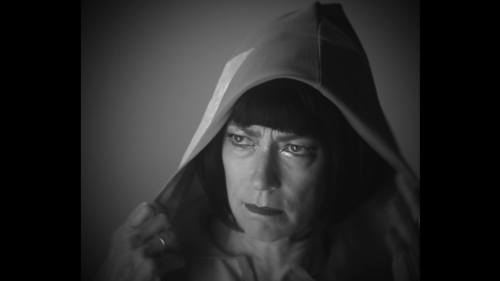Can we talk about the huge vagina at the David Zwirner’s gallery?
Marcel Dzama’s Une Danse des Bouffons (A Jester’s Dance) left me stunned, shocked, and strangely subjective. The artist’s “Dadaist love story” stole my attention from what I had originally aspired to write about (Dzama’s Death Disco Dance, the television sets broadcasting a dance series in the middle of Guadalajara, Mexico on repeat).
After walking into Dzama’s installation, I was instantaneously transported into the modern recreation of Étant donnés’s romantic affair. Inside, mattresses with pillows invite guests to relax their bodies (and mind), in order to focus entirely on the film. The seats, built on foam material, aren’t exactly proper seating… however, I feel they somehow emphasize the architectural artistry within the film – sharp angles in the form of knives, a cutting-edge plot. The foam square compress when I sit down, making me fear sinkage, but also allow me to sink into the love story on-screen.
Within minutes into the film, I began to wonder what exactly constituted this as art. Une Danse was not far off from any of the videos my Computer Science friend makes – seemingly other-worldly, foreign, and not entirely straightforward about its purpose or mission (there’s a wonderment of… ‘what… IS this?’ throughout the entire film that keeps the viewers captivated). The main distinction between the films produced by Dzama and my Comp Sci friend were production levels; my friend doesn’t have access to Kim Kordan and Hannelore Knuts. Or weird papier-mâché vaginas.
In raising the question “what is art?,” Dzama’s installation can be considered an institutional critique. But is that an effect of contemporary art? The expansion of art types and mediums in the twenty-first century, due in part to the Information Revolution powered by microprocessors, has invited an open critique of what is included in contemporary art. Because definitions are relative to what the entities they define are not, perhaps a bigger question is to ask is... what is not art.

No comments:
Post a Comment